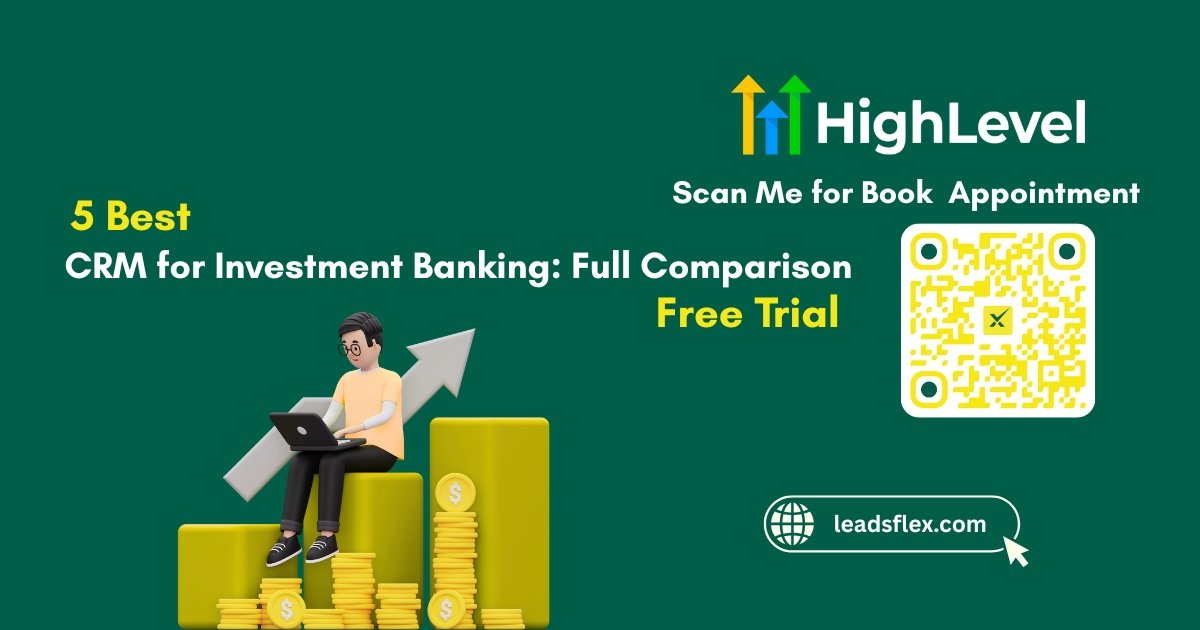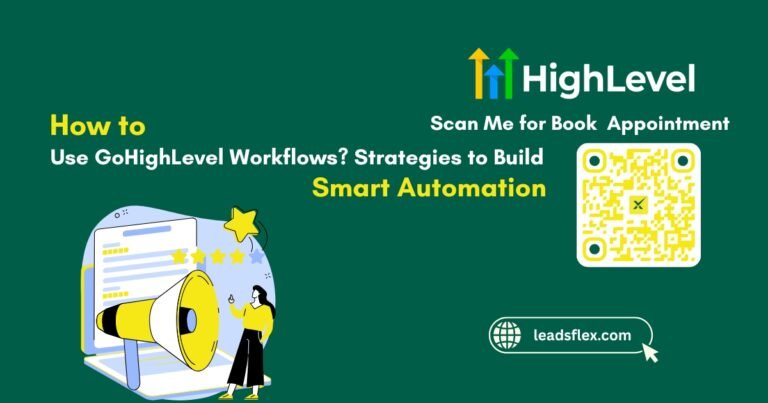5 Best CRM for Investment Banking: Full Comparison + Advanced Strategies + Free Trial
Investment banking demands precision, clear communication, and timely decisions. Every client, deal, and interaction carries weight. Missing small details can shift outcomes dramatically.
A structured approach allows bankers to track progress, monitor client interactions, and make data-driven choices. Efficiency improves, and tasks that once felt daunting become manageable.
The best CRM for investment bankers helps manage relationships, forecast opportunities, and streamline operations. It centralizes contacts, automates follow-ups, and provides insights that guide critical decisions in high-stakes environments.
Choosing the right solution is about more than software features. It’s about improving productivity, reducing errors, and giving bankers the clarity needed to act confidently and grow client trust.
Key Takeaways
Why Investment Bankers Should Use a CRM
A CRM organizes client data, tracks deals, and automates routine tasks, enabling bankers to focus on strategy, build relationships, and make informed decisions efficiently.
Pro Tip
Use your CRM to track which clients refer new business, the frequency of referrals, and the quality of leads. Automate follow-ups and reward programs to encourage repeat referrals,
Top 5 Best CRM for Investment Bankers: Comparison Overview
| CRM Name | Target Audience | Key Strengths | Pricing |
| GoHighLevel | Investment bankers, financial pros, advisors | Automation, pipeline management, client tracking, landing pages | $97/month |
| Salesforce | Large financial firms | Customization, analytics, integrations | From $25/user/month |
| HubSpot CRM | Small to mid-size banks | Ease of use, marketing tools, reporting | Free – $120/month |
| Zoho CRM | Growing investment teams | Affordability, workflow automation | From $14/user/month |
| Pipedrive | Sales-focused bankers | Deal tracking, visual pipelines | From $14.90/user/month |
GoHighLevel
GoHighLevel is designed for professionals who need a complete overview of client interactions. It centralizes contacts, communications, and pipelines in a single dashboard.
Bankers can automate follow-ups, set reminders, and track progress without manually checking multiple tools. This clarity saves time and reduces errors.
Its adaptability allows teams to tailor workflows according to deal stages. You can view all client history at a glance, spotting opportunities others might miss.
With reporting and analytics, GoHighLevel helps forecast outcomes and refine strategies. It’s not just software – it’s a platform that strengthens client relationships while improving operational efficiency.
Key Features
Studies show investment bankers using a structured CRM close deals 2x faster. Experience the efficiency yourself – Explore the best CRM for Investment Banking with a free 30-day trial.
Salesforce
Salesforce is widely used by large financial firms that demand customization and reliability. Its reputation stems from deep integrations and robust analytics.
Investment bankers can create detailed reports, track client behavior, and set complex approval workflows. Every stage of a deal is visible, and teams can align effortlessly.
The platform scales from small teams to enterprise-level organizations, handling thousands of client records without lag. Advanced automation reduces repetitive work while keeping critical data accessible.
Salesforce is more than a CRM; it’s a system for insight-driven decisions. Proper use transforms the way bankers analyze pipelines, anticipate client needs, and optimize revenue.
Key Features
Read this: Top 5 Best CRM for Food Industry: Stop Wasting Time and Money
HubSpot CRM
HubSpot CRM suits small to mid-sized banks that need simplicity and efficiency. It offers a clean interface and intuitive tools.
Marketing tools within HubSpot enhance outreach campaigns. Reporting tools show trends and engagement metrics clearly. Teams gain visibility into pipelines without overwhelming complexity.
HubSpot empowers bankers to manage relationships with minimal friction. It’s especially valuable for teams seeking efficiency and actionable insights without heavy customization.
Key Features
Zoho CRM
This is perfect for growing investment teams looking for affordability with powerful capabilities. It balances cost with flexibility.
Zoho integrates easily with email, calendars, and financial tools. Reporting is visual and clear, making performance monitoring straightforward.
Zoho CRM gives smaller teams capabilities usually reserved for large firms. With automation and data insights, bankers can act decisively, save time, and nurture client trust.
Key Features
Read this: 7 Best CRM for Capital Raising: Manage Investors Like a Pro
Pipedrive
Pipedrive focuses on deal-centric workflows for sales-oriented bankers. It emphasizes visual pipelines and intuitive tracking..
The CRM’s simplicity is its strength. It reduces distraction, highlights priorities, and ensures important deals get attention. Reports provide insights without overwhelming detail.
Pipedrive helps bankers stay organized, close deals faster, and maintain visibility over every client relationship. It’s a lightweight yet powerful tool for focused deal management.
Key Features
Pro Tip
Use your CRM to create visual heatmaps of client portfolios by deal size, industry, and risk level. This allows instant identification of underutilized opportunities, high-value segments, and potential cross-selling targets.
How to Choose the Best CRM for Investment Banking
Selecting a CRM isn’t just about features or cost. Savvy bankers evaluate tools through a strategic lens, considering workflow adaptability, data intelligence, and team behavior.
Assess Cognitive Load, Not Just Features
Most reviews emphasize feature lists, but real-world use depends on how easily bankers can process information. And how fast.
Evaluate CRMs by how quickly your team can interpret dashboards and act decisively. A simpler cognitive flow often drives more deals than excessive functionality.
Test Multi-Layered Scenario Handling
Investment banking involves layered deals with multiple stakeholders. Simulate complex scenarios during trials—mergers, staggered payments, and cross-border clients.
CRMs that adapt without constant manual overrides save significant time and reduce errors.
Analyze Behavioral Adoption Metrics
Beyond basic usage statistics, track how teams interact with CRM features. Identify underused modules, bottlenecks, and friction points.
A CRM that encourages habitual engagement fosters long-term efficiency and adoption.
Focus on Predictive Customization
Look for CRMs that can learn patterns in client behavior and deal flow. Predictive fields or automated suggestions for next steps allow bankers to act preemptively, creating an advantage over competitors relying solely on past data.
Evaluate Integration Elasticity
Most CRMs integrate with email or calendars, but the truly advanced platforms allow flexible, cross-system data flows.
Consider whether it can sync with specialized financial software, compliance tools, and external databases without losing accuracy.
Plan for Scalability and Evolution
A good CRM grows with your firm. Prioritize platforms that allow evolving workflows, custom automation, and modular features that can adapt to future investment strategies, market expansion, or new deal structures.
Join thousands of bankers who’ve streamlined their workflows, improved client relationships, and boosted deal success. See what a powerful CRM can do for you. Tap the link to activate your free trial!
7 Advanced Strategies to Get the Best of a CRM
Most bankers use CRMs for basic tracking, reminders, and pipeline visibility. The true power of a CRM emerges when you leverage unconventional, results-driven strategies.
Behavioral Pattern Mapping
Track not only client actions but also the team’s interactions with each client. Map which bankers consistently close deals faster and what touchpoints drive engagement.
By combining client behavior with internal team patterns, you can predict which strategies will yield faster deal closure.
Dynamic Deal Prioritization
Move beyond static scoring by implementing dynamic prioritization based on deal complexity, client potential, and market conditions.
Update deal priority in real-time as factors change, allowing bankers to focus on opportunities with the highest ROI.
This prevents high-value deals from stalling and ensures resources are allocated where they can generate maximum impact. Over time, this creates a culture of data-driven urgency.
Contextual Micro-Notes
Instead of standard meeting notes, add micro-notes capturing context like client mood, hesitation points, and informal insights. These small details create a deeper understanding of each client relationship and inform personalized outreach strategies.
A CRM with customizable note fields can store these micro-insights, making them searchable across deals and clients.
Predictive Follow-Up Sequencing
Rather than following a fixed follow-up schedule, use CRM analytics to determine optimal timing based on prior client responses.
Identify patterns such as days, times, or touchpoints that yield the highest engagement. Sequence follow-ups automatically, prioritizing interactions likely to convert.
Cross-Deal Trend Analysis
Most CRMs track individual deals, but advanced users can aggregate data across multiple deals and clients to uncover hidden trends. Identify which deal types, sectors, or client behaviors consistently lead to faster closures or higher revenue.
Integrate visual dashboards and predictive modeling to detect anomalies or emerging opportunities before competitors notice.
Internal Knowledge Loops
Use the CRM as a repository for internal strategies and lessons learned. After each deal, log what approaches worked or failed, linking them to specific client segments.
Over time, the CRM becomes a knowledge hub that informs future deals, training, and strategy development.
This “living playbook” ensures institutional knowledge isn’t lost, and new bankers ramp up faster. Teams can quickly reference prior successes to optimize current and upcoming engagements.
Emotional Response Tracking
Beyond tasks and deadlines, track emotional cues during client interactions. Record subtle signs like enthusiasm, hesitation, or urgency in CRM fields. Over time, analyze which emotional patterns correlate with deal success or risk.
By combining quantitative deal data with qualitative emotional intelligence, the CRM becomes a sophisticated tool for predictive relationship management, enhancing both efficiency and client satisfaction.









